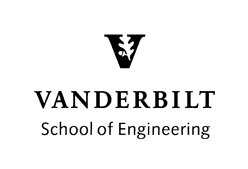PERFORMANCE ASSESSMENT COMMUNITY OF PRACTICE TECHNICAL EXCHANGE MEETING
Modeling the Performance of Engineered Systems for Closure and Near-Surface Disposal
Objective: The purpose of this technical exchange is to understand the current state-of-practice, state of evolving science and opportunities to improve fidelity and reduce uncertainty in models used to estimate the performance of the engineered systems for environmental assessments. The engineered system is defined to include the waste form(s), engineered barriers to contaminant release such as vaults, tanks, caps, and the near field physical-chemical interactions of these systems with the immediate surroundings that impact contaminant release. For each topic, the presentations and discussions are intended to provide (i) state of practice, and (ii) state of science, with discussion focused on opportunities, near-term and longer-term directions.
Dates: July 13-14, 2009
Location: Salt Lake City Marriott University Park
Participants: DOE, NRC, EPA, State Regulators, National Laboratories, Academia, DOE Contractors, International
AGENDA
With links to Presentations and Meeting Videos
Monday July 13, 2009
Window Media Player required to View Videos.
|
Welcome, Introductions, Meeting Objectives – Al Baione (USDOE EM) Video |
|---|---|
|
DOE HQ Perspectives on PAs – Martin Letourneau (USDOE Office of Compliance) Presentation / Video |
|
IAEA Activities on Safety Assessment and Radioactive Waste Management – John Rowat (International Atomic Energy Agency) Presentation / Video |
|
Overview of Data and Modeling Considerations for Engineered Features – Roger Seitz (Savannah River National Laboratory) Presentation / Video |
|
Open discussion – Moderator - James Clarke (Vanderbilt University/CRESP) Video |
|
Introduction to WIPP and Yucca Mountain Assessment Frameworks (Roger Nelson/Paul Dixon) WIPP Status and PA Intro (Nelson) Presentation / Video // Status of the Repository at Yucca Mountain (Dixon) Presentation / Video unavailable |
Afternoon Session: State of the Practice for Modeling Engineered Features
|
Approaches used in Assessing Engineered Systems in Geologic Repositories
|
|---|---|
|
Discussion Video |
|
NRC Perspectives on Modeling of Engineered Features – David Esh, USNRC Presentation / Video |
|
Approaches used in Assessing Engineered Systems in Near-Surface Facilities
|
|
Open Discussion Video |
Tuesday July 14, 2009
|
Modeling Release from Different Waste Forms
|
|---|---|
|
Discussion Video |
|
Modeling Performance and Degradation of Barriers and Barrier Materials
|
|
Discussion Video |
|
Composite Systems
|
|
Discussion Video |
|
Integration and Uncertainty
|
|
Contacts:
Technical: David Kosson, David.Kosson@Vanderbilt.edu, (615) 322-1064; and Roger Seitz, Roger.Seitz@srnl.doe.gov, (803) 725-8269
This meeting is supported by the U. S. Department of Energy, under Cooperative Agreement Number DE-FC01-06EW07053 entitled ‘The Consortium for Risk Evaluation with Stakeholder Participation III’ awarded to Vanderbilt University. The opinions, findings, conclusions, or recommendations expressed herein are those of the author(s) and do not necessarily represent the views of the Department of Energy or Vanderbilt University.
Disclaimer: This meeting was prepared as an account of work sponsored by an agency of the United States Government. Neither the United States Government nor any agency thereof, nor any of their employees, makes any warranty, express or implied, or assumes any legal liability or responsibility for the accuracy, completeness, or usefulness of any information, apparatus, product, or process disclosed, or represents that its use would not infringe privately owned rights. Reference herein to any specific commercial product, process, or service by trade name, trademark, manufacturer, or otherwise does not necessarily constitute or imply its endorsement, recommendation, or favoring by the United States Government, or any agency thereof. The views and opinions of authors expressed herein do not necessarily state or reflect those of the United States Government or any agency thereof.

